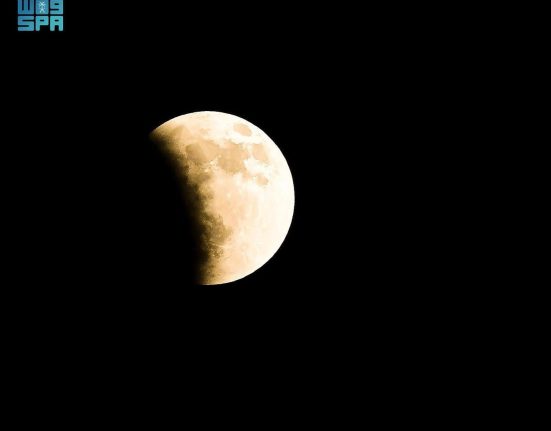Residents across various parts of the Kingdom of Saudi Arabia were treated to a breathtaking view of the lunar eclipse, as the celestial event unfolded in the night sky and was clearly visible in numerous cities. From Riyadh to Jeddah, Dammam to Abha, sky-watchers gathered to observe the rare astronomical occurrence, which drew attention from both amateur stargazers and professional astronomers.
The partial eclipse, which took place under mostly clear skies in many regions, allowed for uninterrupted viewing as the moon gradually passed through the Earth’s shadow. The phenomenon, which lasted for several hours, showcased a visible darkening of the lunar surface, reaching its peak in the late hours of the night. In some areas, the distinctive reddish hue, commonly referred to as the “blood moon” effect, could also be briefly observed.
Local observatories and astronomy societies in Saudi Arabia, including the Jeddah Astronomy Society, had earlier announced the expected timing of the eclipse and encouraged the public to witness the event safely, without the need for special equipment. They also used the opportunity to engage in public education, sharing facts about the mechanics of lunar eclipses and their significance in Islamic astronomy.
For many Saudis, the eclipse held not only scientific interest but also spiritual significance. As is customary in Islamic tradition, mosques in several cities held Salat al-Khusuf (the eclipse prayer), a special congregational prayer recommended during lunar eclipses.
Worshippers gathered in reverence, reflecting on the signs of Allah’s creation as emphasized in Islamic teachings.
KIIN360 gathered that this was one of the most widely observed lunar events in the region in recent times, with thousands capturing photos and videos from rooftops, open spaces, and even desert areas known for their clear skies and minimal light pollution.
Astronomers have noted that the Kingdom remains one of the best regions in the Middle East for observing astronomical events due to its expansive open landscapes and favorable weather conditions during eclipse seasons. More celestial events are expected later in the year, with the Saudi astronomical community already preparing for increased public participation.

